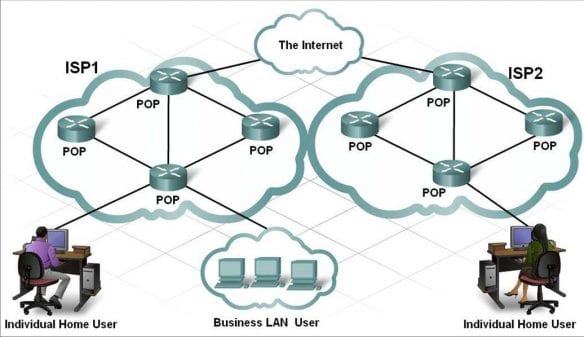Southwestern Integrated Fibre Technology (SWIFT) Network: Rural Ontario

In 2016, the Canadian Radio and Television Commission (CRTC) ruled that all Canadians deserve broadband-quality Internet access. This means that Internet infrastructure must meet or exceed download speeds of 50 megabits/second (Mbps) and upload speeds of 10 Mbps. Since not all Canadians have access to sufficient business or residential broadband services, significant work will need to be completed to comply with the new requirements.
Many municipalities and Internet service providers (ISPs) across the country, including those in Ontario, will need financial and operational support to complete infrastructure improvements. Thankfully for communities in southwestern Ontario, the Southwestern Integrated Fibre Technology (SWIFT) Network provides a plan and financial resources for building long-lasting fibre optic infrastructure in some key regions in Ontario.
Fast, reliable technology will ensure that Ontario businesses are more competitive and residents have a higher quality of life.
The network will be installed through three phases; each phase will expand the number of fibre optic points of presence (POP) maintained by local Internet service providers. These service providers will be responsible for building and maintaining the network so that it remains operational well into the future.
What is the Southwestern Integrated Fibre Technology (SWIFT) Network?
SWIFT is a non-profit capital corporation that was formed with the sole purpose of establishing a high-speed Internet network for municipalities in southwestern Ontario, Caledon, and Niagara Region. This will improve Internet access to more than 3.5 million Ontarians across 350 communities.
The project itself seeks to combine the resources and expertise of municipalities, ISPs, and the provincial and federal governments to build a lasting, reliable Internet network. Each partner has contributed funding to participate ($18M combined for municipalities, $188.6M combined for governments, $80.4M combined for telecoms), with the pool of funds used to strategically build new points of presence (POP).
Point of Presence: A local access point consisting of high-speed telecommunications equipment and technologies that enable users to connect to the Internet and transmit service signals from one ISP to another.

(Source: Networking for Home, Business or ISP –Bijan Ghayyoomi)
These points of presence will increase the deployment of core and aggregate technologies which form the Internet’s backbone. This is a significantly different focus than last-mile connections, which seek to connect consumers to POPs. Last-mile connections, in some cases, will be provided by SWIFT, however the program is largely focused on Internet backbone development.
Issues Addressed by the Southwestern Integrated Fibre Technology Network
The Southwestern Integrated Fibre Technology (SWIFT) Network will address a technology gap experienced widely across southern Ontario – access to fibre optic Internet. Although basic Internet options are available across most of the province, these slow and unreliable networks mean:
- Quality of Living is Diminished: Municipal residents not able to use technologies because of their local infrastructure feel ‘left out’ and are less likely to stay in the area.
- Business Competitiveness is Diminished: Businesses have a more difficult time accessing skilled labour and cannot perform the tasks/activities performed by businesses that are well-connected to fibre optic Internet.
How the SWIFT Network Will Improve Fibre Optic Internet Access
Rural Ontario lacks quality Internet service because their current infrastructure networks are sparse and use outdated technology. ISPs have been reluctant to extend service because low population density regions cost more to service, however this trend has caused enormous differences over time.
Last-mile connections will be easier and less expensive for ISPs and municipalities to develop after SWIFT is complete.
SWIFT will work together with ISPs to reduce the cost of building and servicing the core network. By establishing a core network, it’ll then become easier and more affordable for ISPs to build last-mile connections. Although some last-mile connections will be built through SWIFT, it’s expected that most of the project will be directly related to supporting the main network.
Ontario Regions Supported by the SWIFT Network
Internet consumers (people and businesses) residing in a SWIFT member county/municipality should expect service improvements in the coming years. This includes:
[eva_sh_column add_item=”Add Column” element_custom_class=”list-column”][eva_sh_column_item column_size=”1 / 2″]
- Brant County;
- Bruce County;
- Town of Caledon;
- Chatham-Kent;
- Dufferin County;
- Elgin County;
- Essex County;
- Grey County;
- Huron County;
[/eva_sh_column_item][eva_sh_column_item column_size=”1 / 2″]
- Lambton County;
- Middlesex County;
- Norfolk County;
- Oxford County;
- Perth County;
- Region of Niagara;
- Simcoe County; and
- Wellington County.
[/eva_sh_column_item][/eva_sh_column]
Connect to Innovate Grants Provide Additional Support for SWIFT Activities
Municipalities included in the SWIFT network may also be eligible to receive support for Internet infrastructure projects through Connect to Innovate. The Connect to Innovate initiative was launched in 2017 by the federal government to support development of backbone connections (including fibre optic networks).
Connect to Innovate funding can be used to complement SWIFT projects and accelerate network development. It’s important to note that funding cannot be stacked for SWIFT projects, however, Connect to Innovate will provide grants to pick up where SWIFT stops.
Connect to Innovate will award grants worth up to 50-90% of eligible expenses to provide (at least) broadband-level Internet speeds to Canadians across the country.
There are four types of projects that will be considered for Connect to Innovate funding, including:
- New Backbone Applications: Development of a core/backbone network where one is currently unavailable;
- Backbone Upgrades: Increasing the capacity of existing backbones;
- Network Resiliency: Introducing alternate data pathways to improve network reliability; and
- Last-Mile: Connecting businesses and households to ISP networks.
Access Federal & Provincial Government Funding for Municipal Projects
Canadian municipalities should access funding programs to reduce the cost of infrastructure development projects. Infrastructure grants and other funding programs can improve the quality of life municipalities can provide, so developing a plan to access them is critical to success.
Municipalities should contact Mentor Works, the Government Funding Planners™ to discover their eligibility for Connect to Innovate and a variety of other programs™.
Recent Infrastructure Funding News:
- Universal Broadband Fund (UBF) Connects 145 First Nations Homes
- Ontario 2021 Budget – New COVID-19 Business Support Funding
- Zero-Emission Vehicle Infrastructure Program (ZEVI): Funding for EV Charging Stations
- Canada Cultural Spaces Fund: Up to $15M for Infrastructure Improvements
- Investing in Canada Infrastructure Program: Up to $36M in Community Grants


Thank heaven’s something is going to improve and make rural internet affordable and reliable. At present i can only get satelite internet which is extemely ecpensive. If their rates go up it will be beyond my budget.
Thankyou!
Thanks, Neil. We’re excited to see new programs to improve rural broadband infrastructure, as well! And with the recent announcements, you can expect even more programs to release in the near future, including the ICON program. Subscribe to our weekly funding newsletter to see that when it’s released.